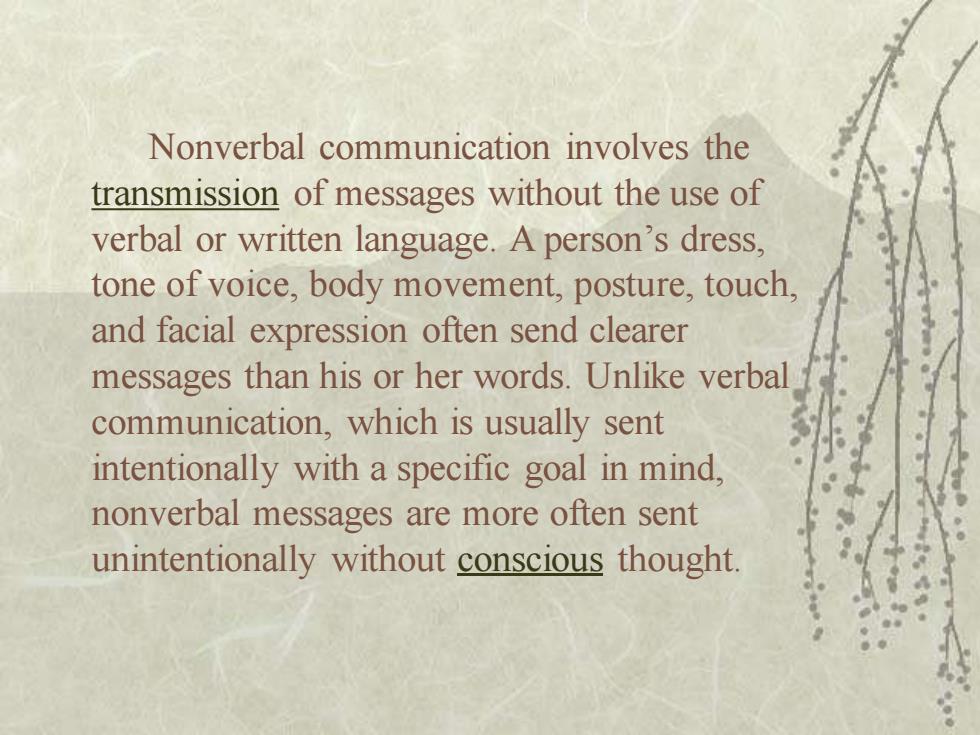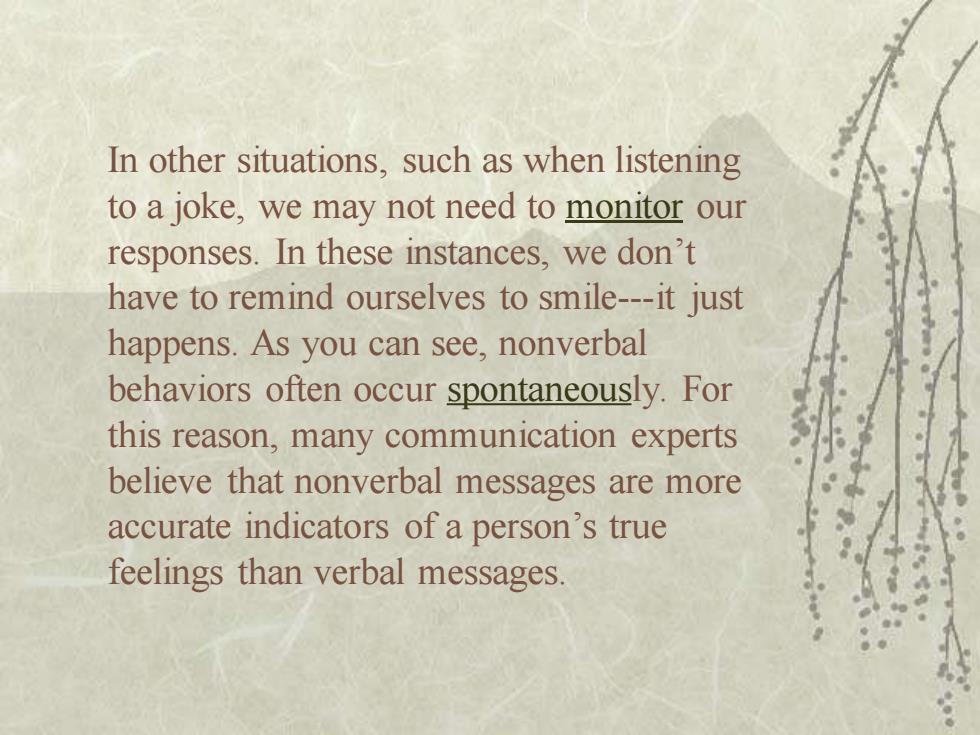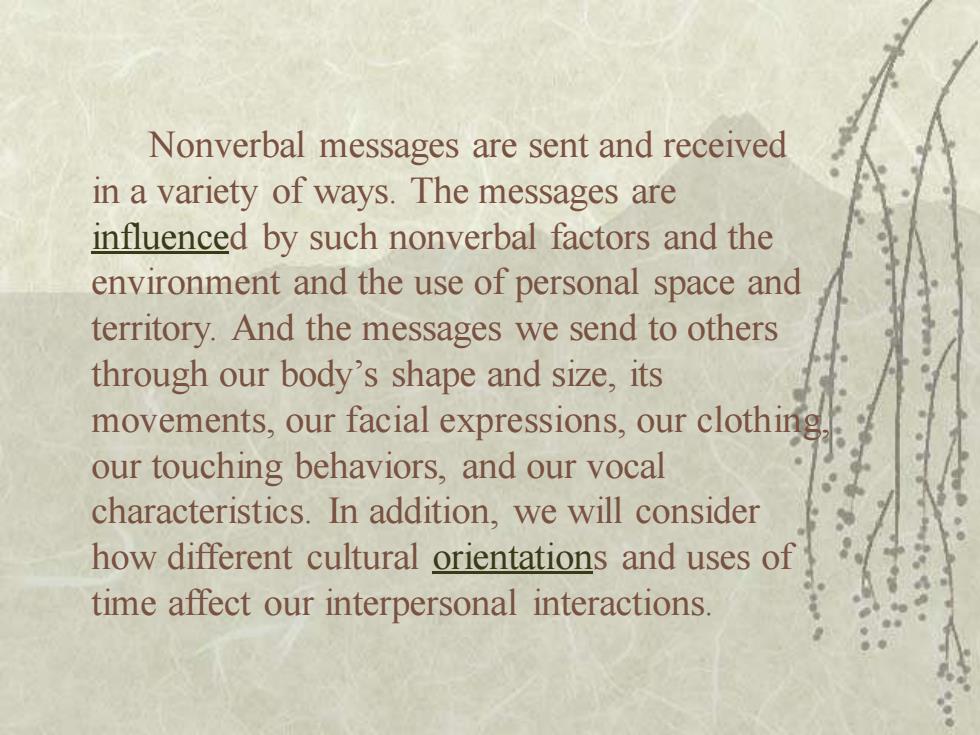
Nonverbal communication involves the transmission of messages without the use of verbal or written language.A person's dress, tone of voice,body movement,posture,touch, and facial expression often send clearer messages than his or her words.Unlike verbal communication,which is usually sent intentionally with a specific goal in mind, nonverbal messages are more often sent unintentionally without conscious thought
Nonverbal communication involves the transmission of messages without the use of verbal or written language. A person’s dress, tone of voice, body movement, posture, touch, and facial expression often send clearer messages than his or her words. Unlike verbal communication, which is usually sent intentionally with a specific goal in mind, nonverbal messages are more often sent unintentionally without conscious thought

For example,you may have been in a situation such as a job interview in which a recruiter said,"Relax,I just want to get to know you a little better,"and you wondered, "How did he know that I was anxious?" Later,you may have remembered perspiring, wringing your hands,playing with your watch,or of our outward manifestations,we can give impressions that we'd like to avoid
For example, you may have been in a situation such as a job interview in which a recruiter said, “Relax, I just want to get to know you a little better,” and you wondered, “How did he know that I was anxious?” Later, you may have remembered perspiring, wringing your hands, playing with your watch, or of our outward manifestations, we can give impressions that we’d like to avoid

In other situations,such as when listening to a joke,we may not need to monitor our responses.In these instances,we don't have to remind ourselves to smile---it just happens.As you can see,nonverbal behaviors often occur spontaneously.For this reason,many communication experts believe that nonverbal messages are more accurate indicators of a person's true feelings than verbal messages
In other situations, such as when listening to a joke, we may not need to monitor our responses. In these instances, we don’t have to remind ourselves to smile---it just happens. As you can see, nonverbal behaviors often occur spontaneously. For this reason, many communication experts believe that nonverbal messages are more accurate indicators of a person’s true feelings than verbal messages

Nonverbal messages are sent and received in a variety of ways.The messages are influenced by such nonverbal factors and the environment and the use of personal space and territory.And the messages we send to others through our body's shape and size,its movements,our facial expressions,our clothing. our touching behaviors,and our vocal characteristics.In addition,we will consider how different cultural orientations and uses of time affect our interpersonal interactions
Nonverbal messages are sent and received in a variety of ways. The messages are influenced by such nonverbal factors and the environment and the use of personal space and territory. And the messages we send to others through our body’s shape and size, its movements, our facial expressions, our clothing, our touching behaviors, and our vocal characteristics. In addition, we will consider how different cultural orientations and uses of time affect our interpersonal interactions